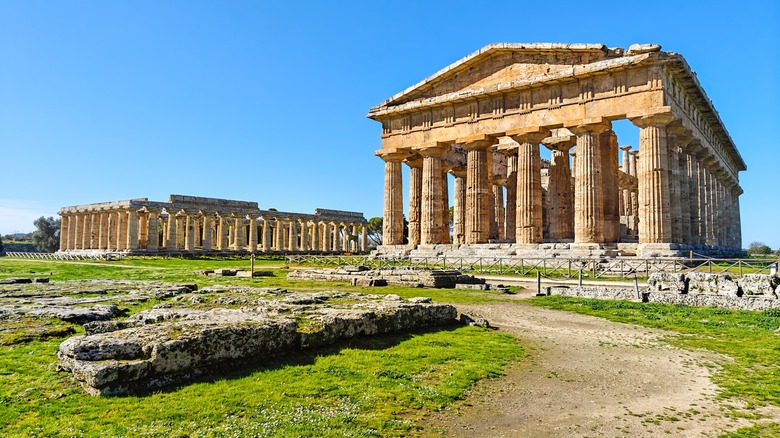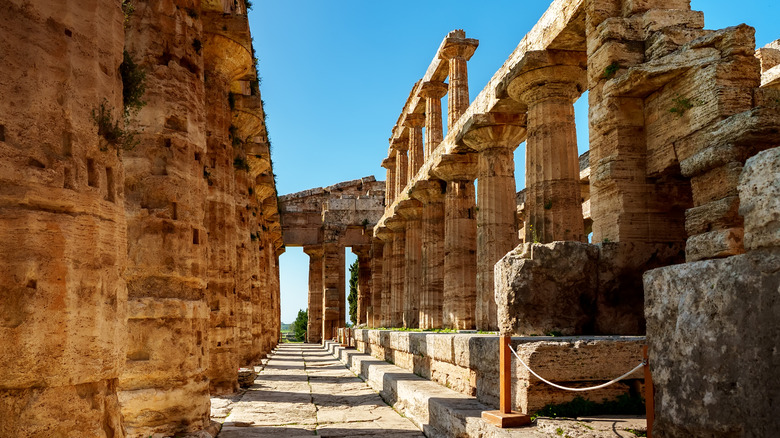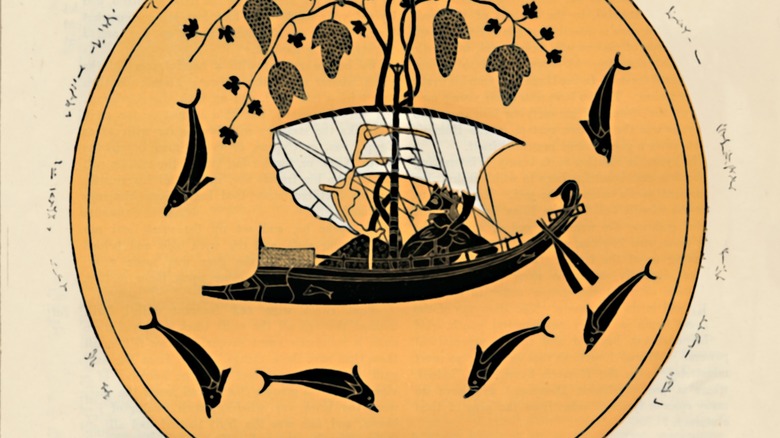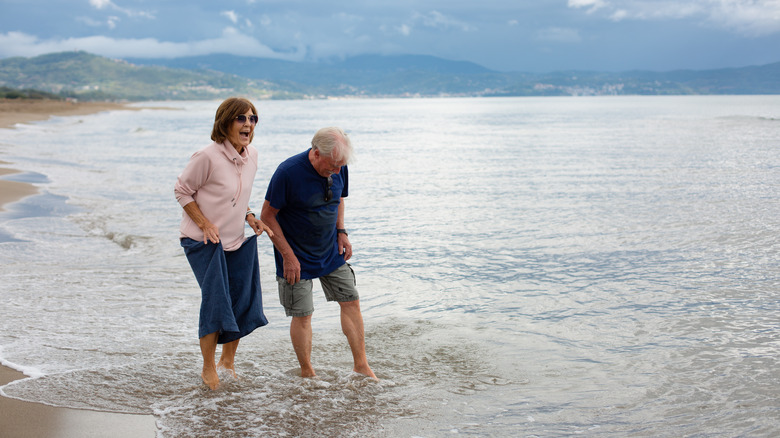To Witness Some Of Ancient Greece's Best-Preserved Ruins, Visit This Underrated Italian Town
Pop quiz! What are all the ancient Greek landmarks you can think of? If you're like most people, you probably know the Acropolis, and specifically the Parthenon, that enduring symbol of Western democracy. If you love theater, you may know the Odeon of Pericles, where many classical plays were performed. The Agora in Athens is pretty well known as an ancient marketplace, and while we don't know exactly where the Oracle of Delphi told the future, we assume there's an archaeological site we can visit. Many of us have heard that the ruins of Troy are in Turkey, and while the Colossus of Rhodes crumbled long ago, the island still has its traces of Greek architecture.
But almost no one has heard of Paestum. This ancient Greek city, formerly known as Poseidonia, thrived for two centuries between 600 and 400 BCE; to put this in context, this period overlapped with the entire lifetime of the philosopher Socrates. Incredibly, some of the best preserved Greek temples in the world stand in this little-known town, which still bears the Latin name Paestum. Weirder still, these temples aren't located in Greece at all, but on the western coast of Italy, near Naples. Indeed, you could easily add Paestum to a list of underrated Italian tourist destinations.
Archaeology fit for the gods
Paestum isn't nearly as popular as, say, Athens or Santorini, but visitors will be shocked at how intact these ancient temples are. Greek residents built a temple for Hera, queen of the ancient Greek pantheon, then a temple for Athena, goddess of love. Eventually, they built a second temple for Hera; each was built in the Doric style, which basically means simple pillars without any extra ornamentation. A great number of these pillars survive, giving visitors a good sense of what these voluminous structures looked like 2,400 years ago. The grounds around these shrines are littered with ancient stonework, outlining where the city's major buildings used to stand.
The adjacent Archaeological Museum is filled with artifacts from ancient Paestum, revealing the tools, artwork, and vestments that were crafted in this very place. General admission is about $13, with free entry on Sundays. Visitors in the high season are advised to arrive early. While the name "Paestum" might not help most high school students pass the AP history exam, this place does attract a good number of classicists, and the sites and museums can get crowded. This is just one of many sage travel hacks for visiting Italy.
A hint of Greece on the Italian coast
You may be wondering: Why was there such a resplendent Greek city on the far side of Italy? As it happens, the ancient Greeks had a colonial phase, known as "Magna Graecia," when they sailed around the Mediterranean and built colonies in unlikely places, such as Sicily and North Africa. Paestum seems to have enjoyed a lot of success; these monuments were built only a mile from the coast, and the original name "Posedionia" translates as "Land of Poseidon," in honor of the sea god. Only a wealthy community could have afforded such enormous temples, built from massive chunks of locally-sourced travertine and sandstone.
It's possible that this commercial capital could have kept doing well for centuries more, except that those meddling Lucanians, a southern Italian tribe that didn't love having foreigners on their soil, no matter how impressive their engineering. The Lucanians took over the city in 410 BCE and ruled there for the next hundred years, until the Romans arrived and conquered the city (which, to be fair, is what they did best). The Romans didn't take care of the city and Paestum became an ugly backwater until long after the fall of the Roman Empire.
Beaches and hospitality in modern Paestum
The modern town of Paestum is delightful, though, and it still bears the ancient name. The town is fairly easy to get to, thanks to a local railroad station and direct trains from Naples and Salerno. There are numerous bus lines that stop here as well, taking routes along the beautiful eastern coast. The long crescent of beach is popular with sunbathers and paddleboarders, and the waters are extremely shallow, making this a great wade for families with young children. The town is easygoing and boasts a good number of traditional Italian restaurants. Look west, and the Tyrrhenian Sea stretches before you; look east, and a few of Salerno's 699 mountains garland the horizon.
If you're enjoying this relaxed little città, consider sticking around: the area is absolutely littered with hotels, and you're right on the edge of Cilento National Park, a spectacular expanse of cliffs, forest, wildlife, and, yes, more ancient ruins. If you're driving this scenic seashore, you're also only 90 minutes from this little hidden gem on the Amalfi Coast.



